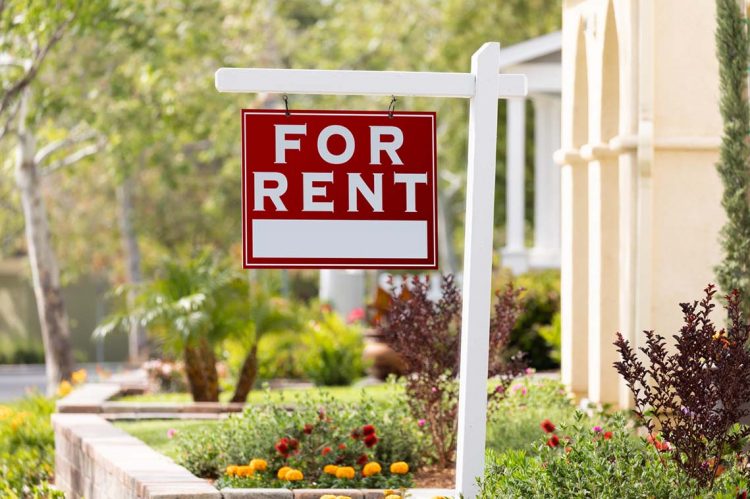A report from Harvard University’s Joint Center for Housing Studies (JCHS) is shedding new light on the country’s rental market, which faces a crisis in supply and affordability as properties shift from individual landlords to institutional investors, and the gap between low and high-income households—as well as families of color and white families—expands.
The study found demand for rentals, similar to the demand for homes, spiked in 2021, dropping the vacancy rate for apartments to its lowest level since the 1980s at just under 6%.
At the same time, though, lower-income and Black and Hispanic renters all suffered disproportionately from rising rent costs and an overall decrease in the number of affordable units. Nearly a quarter of all Black renters and 19% of Hispanic renters were behind on rental payments in the third quarter of 2021, compared to 9% of white renters. The availability of units that are available to lower-income families also fell during the pandemic.
This is supported by other data that points to expanding issues with affordability as rental costs increase.
Whitney Airgood-Obrycki, a research associate at JCHS, said during a panel held to discuss the report that “long-standing discrimination” in wages, education and employment has left Black and Hispanic families ill-prepared for the pandemic and the ongoing affordability crisis.
Even before the pandemic, the overall share of renters who are cost-burdened—paying 30% or more of their income in rent—had been rising across the board, with lower-income families hardest hit. More than three-quarters (80%) of renters making $30,000 or less were cost-burdened in 2019, and even those making between $30,000 and $75,000 had a 41% chance of being cost-burdened.
The report summary said these findings supported “the need for a permanent, fully funded housing safety net,” also detailing how much more dire the last two years or so would have been for renters without government assistance in the form of student loan payment freezes, unemployment assistance and direct rental relief.
“The pandemic has only underscored the importance of safe, affordable housing as a foundation of health and wellbeing,” said Airgood-Obrycki. “Further investment…can help ensure the lower income renters have a safe place to live.”
Stock and Markets
While this crisis in affordability and equity is clearly a matter of tremendous urgency, the report found a bevy of other interesting trends in the rental sector both during and before the pandemic. Rental buildings are getting bigger—that is, more and larger multi-unit developments. The share of buildings with 20 or more units increased by 1.7 million between 2014 and 2019 to reach 23% of the total share of rentals. Three-quarters of all rental buildings built in 2020 were in this largest category.
New multi-family starts also reached a three-decade high, driven by increased demand from high-income renters, according to the report. Construction of these types of housing “should remain robust for some time,” according to the report.
“The folks who are feeling the strength of the market are people in the professionally managed apartment sector,” said Chris Herbert, managing director of the JCHS. “It really put them in a really good financial position…multi-family developers are also feeling good.”
Those housing units are shifting hands, however, from smaller mom-and-pop landlords to larger institutions. Between 2001 and 2018, the share of properties owned by companies jumped from 18% to 26%, and investors purchased a record 18.2% of all homes in Q3 of 2021—though not all of those were necessarily intended to be rentals. In the short term, the rapidly rising cost of homes and building materials is pushing more stock into the hands of deep-pocketed investors and large corporations, which can present other problems for tenants.
Institutional landlords are less likely to invest in their properties, according to the report. About 40% of individual investors put at least $3,000 into their rental properties, while only 33% of non-individual investors did the same. While overall investments in rental stock nearly doubled between 2009 and 2019, only a tiny fraction of that increase went to maintenance costs, with most landlords adding amenities or expanding their buildings in other ways.
A 2020 survey of landlords in large metros found that almost a third had chosen to defer maintenance that year, up from only about 5% in 2019.
The decay of aging rental stock promises to be a problem going forward, again, disproportionately affecting lower-income families. Rental properties, particularly affordable or subsidized units were more likely to bear the brunt of climate-change driven extreme weather events, and received less disaster assistance than homeowners in their aftermath.
Peggy Bailey, a senior advisor at the federal office of Housing & Urban Development (HUD), emphasized that the harmful and alarming trends in the areas of affordability and equity must be addressed through policy, and referred to the significant funding for affordable rental housing in the stalled Build Back Better bill championed by the Biden administration.
“A sole reliance on the market or on the charity of landlords and owners to address the needs of people at the lower income levels is misplaced,” she said.
 Jesse Williams is RISMedia’s associate online editor. Email him your real estate news ideas to jwilliams@rismedia.com.
Jesse Williams is RISMedia’s associate online editor. Email him your real estate news ideas to jwilliams@rismedia.com.












